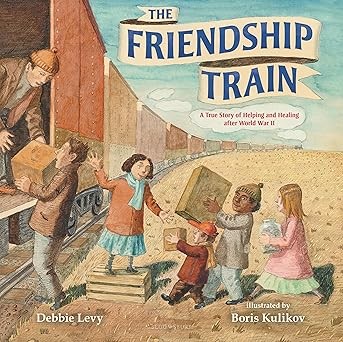
Just after midnight on July 30, 1945 the USS Indianapolis was torpedoed by a Japanese submarine. Fourteen minutes later a thousand critically wounded young men were in shark-infested waters. The ship was gone. And the Navy did not even know they were missing.
This is the compelling story of the little-known but greatest sea disaster in naval history. It is also the more compelling story of how an eleven-year-old boy turned a simple question while watching Jaws into his 5th grade science project; into his mission to exonerate the USS Indianapolis’ captain; into meeting with some of the most powerful people in our nation’s capital; and into victory for the men who remained and their captain. By age 16 Hunter had accomplished his mission. Because of Hunter’s persistent work Captain McVay was exonerated of all responsibility in the sinking of the mighty ship. Hunter was a friend and hero to the remaining survivors of the USS Indianapolis, as well as a role model to young students in showing how diligence can and does make a difference.
The tragedy was the sinking of the ship moments after it was torpedoed and the loss of hundreds of lives. The aftermath of the sinking is a story of death, survival, and broken lives. The victory is the perseverance and compassion of Hunter Scott who unraveled the mysteries of the unfair courtmartial of Captain McVay and whose diligence was rewarded when Captain McVay was exonerated of responsibility for the sinking in 2001. When I purchased this book it was because so many 7th & 8th grade boys had shared their fascination with subjects related to war. I began a search to find meaningful texts to share with them. This is probably the best book I have found related to war. The details of injury, death, and survival are graphic, but also informative. There are real heroes and villains with names and faces (primary source photos). There is intrigue as Hunter’s research unravels the mystery of honor, culpability, and devotion.
The real hero of this book is Hunter Scott and his story of curiosity, research, persistence, compassion, and relentless devotion to justice. He tells a part of his own story in the lengthy preface written when he was 16 years old. The seesaw structure of the book allows readers to get to know the sailors, the ship, the 5 day ordeal of survival prior to rescue, and Hunter’s research and diligence while seeking justice. In his quest, Hunter befriended many of the survivors. He became friends with legislators. As a 12-year-old researcher he gave testimony to powerful leaders in Congress. He became heir to the largest collection of memorabilia from the USS Indianapolis as survivors realized the magnitude of the work he was doing. Hunter is a role model, who demonstrates that young people can make a difference. His journey was not easy but he persevered and this story alone should make this a worthwhile book.
Teaching Tags: World War II, Navy, Living Like a Researcher, Survival, Persistence, World War II Heroes, 21st Century Child Hero, Reluctant Readers, Making a Difference
Pathways Themes: Social Issues & Justice, Heroes, Yesterday
Reviewed by Krystal Bishop, EdD
Professor of Education
Southern Adventist University


Author: Debbie Levy